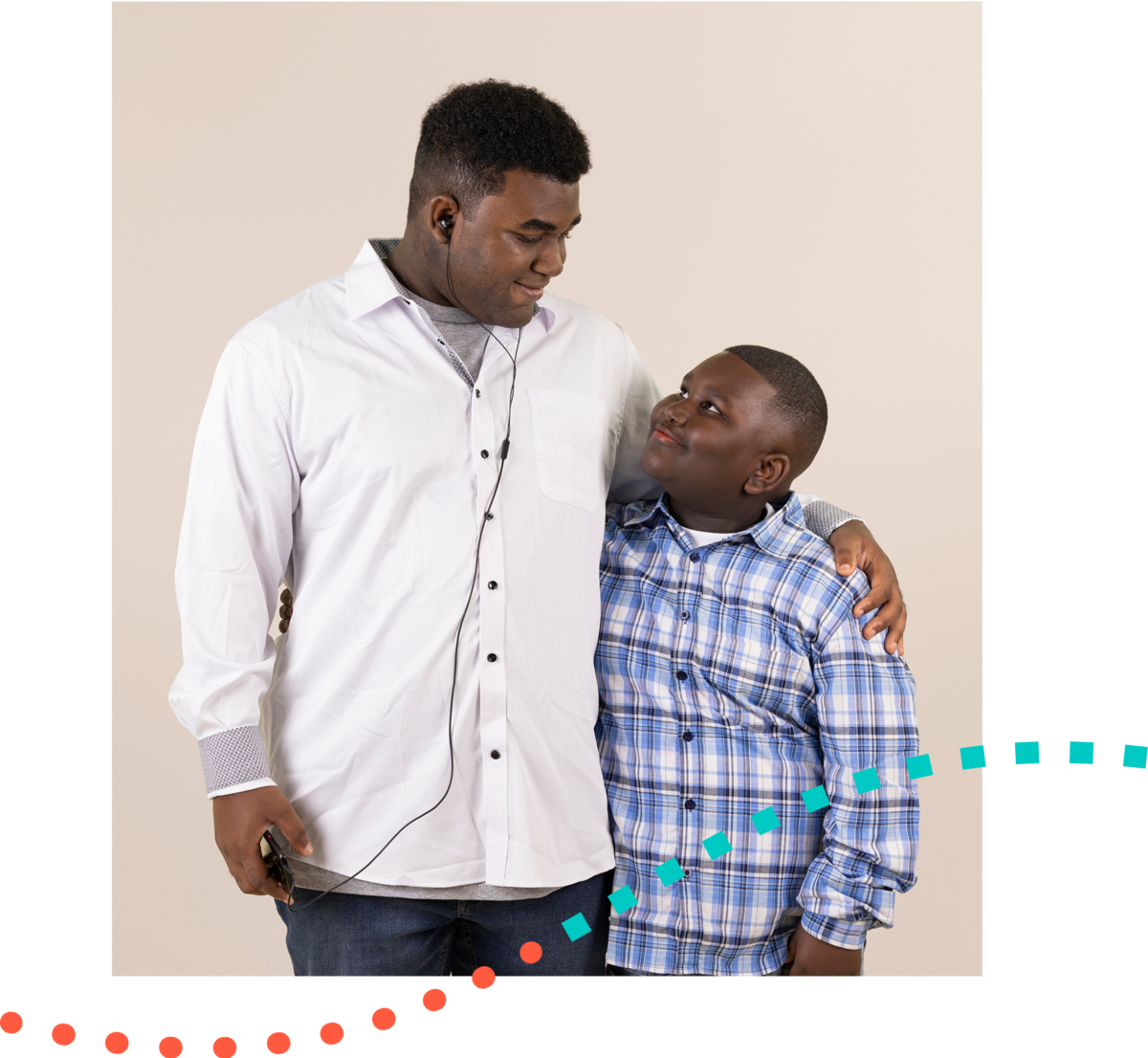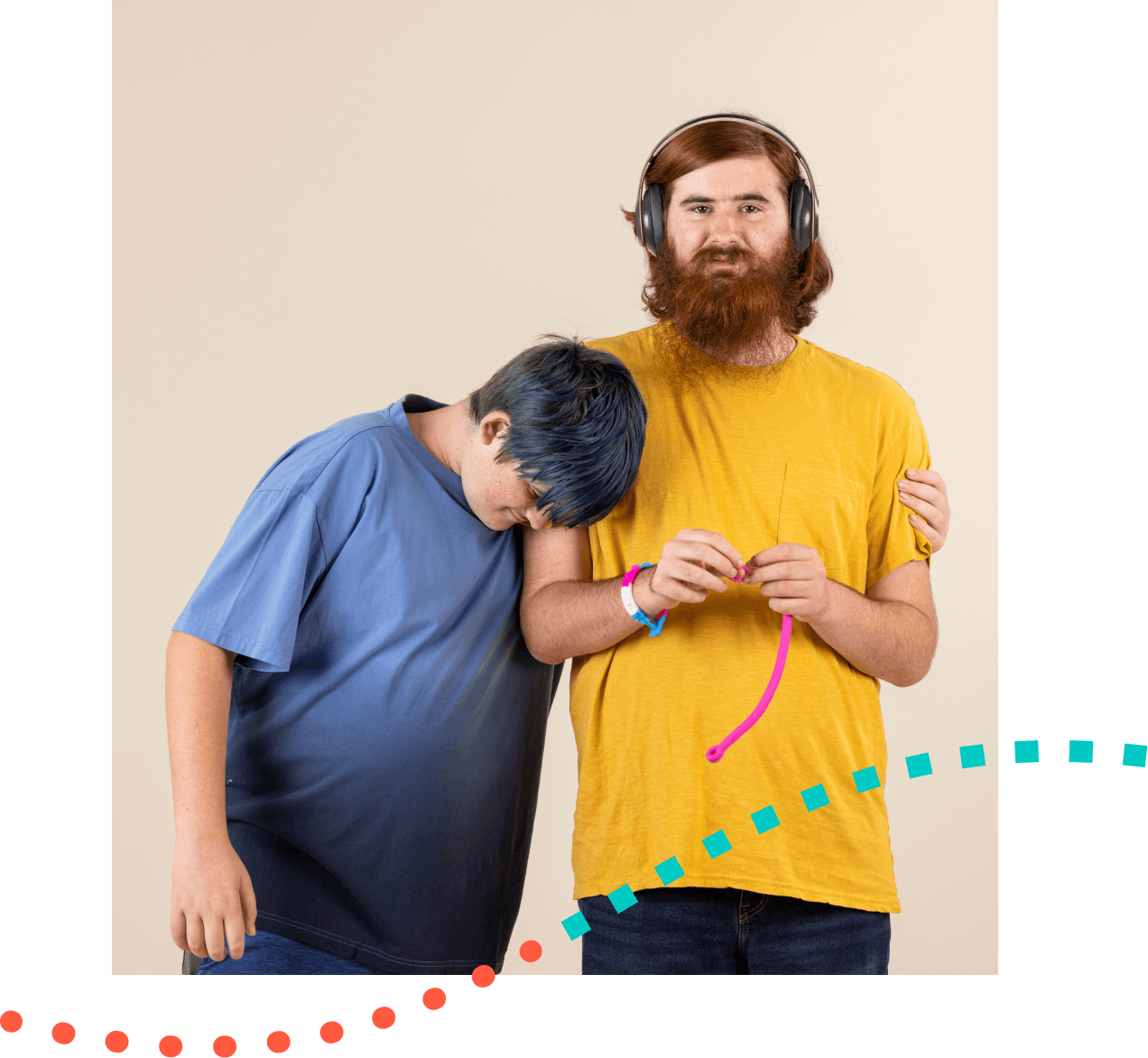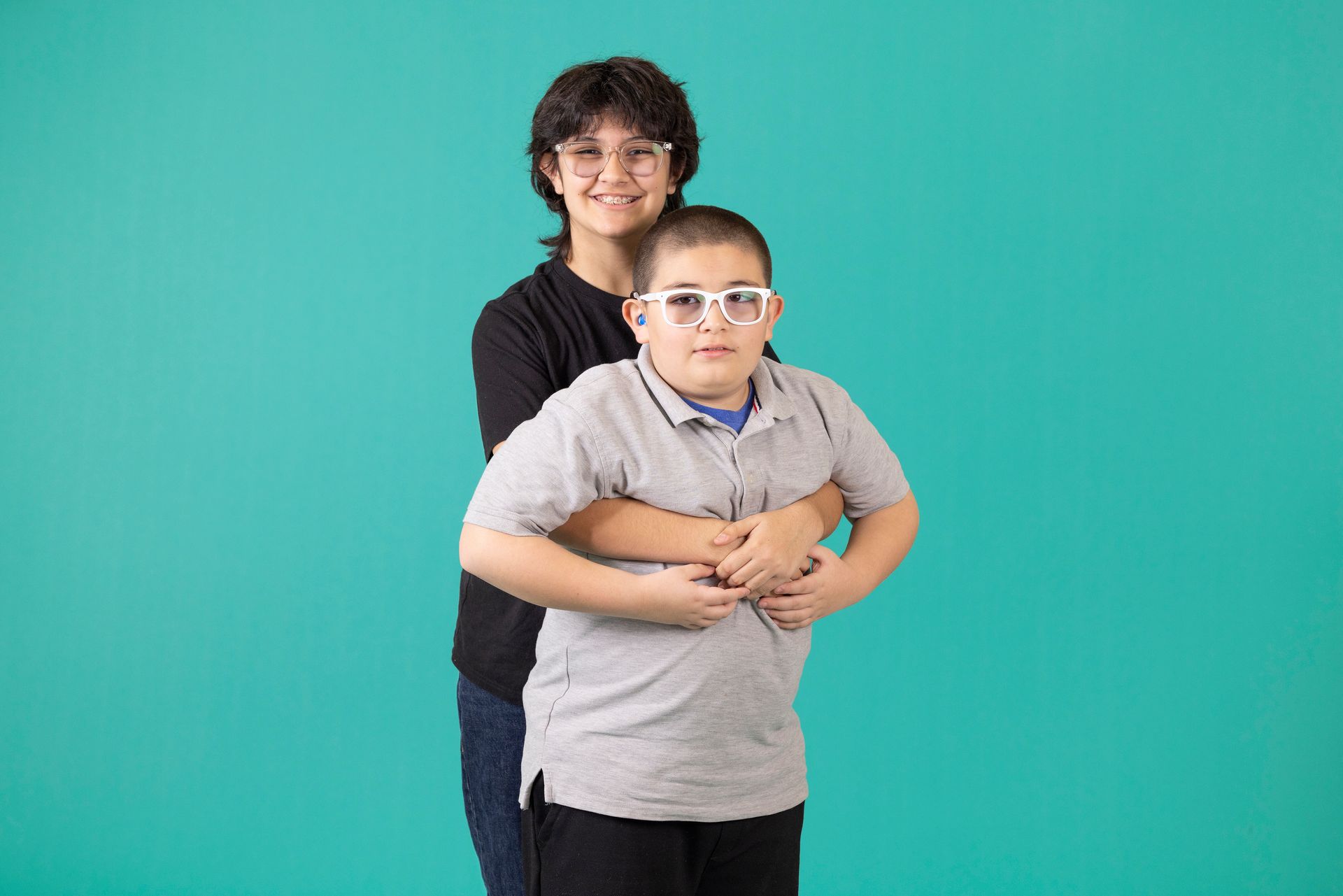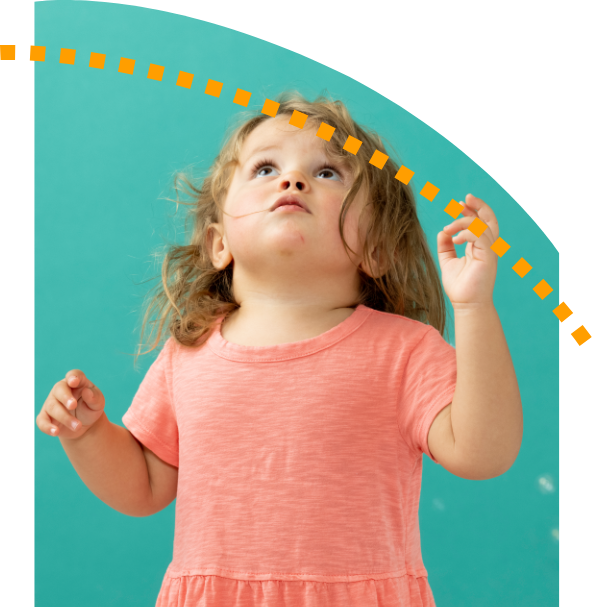Identifying Autism
Screening & Diagnosis
Overview
When families or caregivers notice that a child is not meeting typical developmental milestones, they often seek help from experts like psychologists, educators, and medical professionals to understand what’s happening.
Sometimes, Autism can be harder to diagnose because it may appear similar to other conditions, such as intellectual disabilities, sensory processing differences, or issues with hearing or vision. These conditions can occur alongside Autism, and it can be confusing for families when they receive multiple diagnoses.
However, it is important to identify Autism early, as an accurate diagnosis can lead to the right educational and home-based support.
It’s also important to understand that a medical diagnosis of Autism is different from an educational evaluation done by a school. Both are important, but they serve different purposes.



Identifying Autism early leads to much better outcomes. The sooner a child is diagnosed, the sooner they can start benefiting from early intervention therapies and education.
The Centers for Disease Control and Prevention (CDC) recommends that all children be screened for Autism by their pediatrician three times before the age of three—at 9 months, 18 months, and 24 or 30 months. It's important to begin intervention as soon as Autism is suspected, even before a formal diagnosis is made.
Early intervention is key. Children who receive support early can make great progress in developing important skills, improving their quality of life.
For more information about early signs of Autism, visit the CDC’s “Learn the Signs. Act Early” initiative.

A medical diagnosis of Autism is made by professionals like psychologists, developmental pediatricians, or other specialized doctors. They assess a person’s behaviors, communication, and development using specific guidelines from the Diagnostic and Statistical Manual of Mental Disorders (DSM-5). This manual helps doctors identify Autism by looking for certain patterns in how a person communicates, interacts socially, and engages in activities and interests.
It’s important to know that a brief observation in one setting can’t give a full picture of someone’s abilities and behaviors. To make an accurate diagnosis, doctors also look at the person’s developmental history and gather input from parents, caregivers, or teachers.
There are no medical tests, like blood work or brain scans, that can diagnose Autism. Instead, the diagnosis is based on observing how a person communicates, interacts with others, and handles different tasks or interests.
Doctors who may diagnose Autism include pediatricians (especially developmental pediatricians), neurologists, psychiatrists, and psychologists. Not all doctors have experience with Autism, so it’s important to find a knowledgeable professional. You can ask for recommendations from:
- The Autism Society of Northeastern Pennsylvania
- Autism support groups
- Families of individuals with Autism
- Your primary care provider

An educational determination is made by a multidisciplinary evaluation team of various school professionals. The evaluation results are reviewed by a team of qualified professionals and the parents to determine whether a student qualifies for special education and related services under the Individuals with Disabilities Education Act (IDEA) (Hawkins, 2009).
An educational determination can qualify an individual for support within school settings. However, an educational determination is not the same as a medical diagnosis, and often will not qualify an individual for therapies and support outside of school that would typically be covered by insurance or Medicaid. Additionally, a medical diagnosis of Autism does not guarantee an educational determination.
Diagnosis Across the Lifespan
Evaluations typically begin with your primary care provider and vary based on age. If your primary care professional does not wish to refer you to a diagnostician, or does not acknowledge your concerns, it is important to know that you have the right to contact a diagnostician for a second opinion. Check the website of your local Autism Society affiliate for information about diagnosticians in your area, or call our team of national Information & Referral specialists at
(570) 291-8078.
Infant and Toddler
Infant and toddler diagnosis begins with voicing your concerns with your child’s pediatrician or primary care doctor. A primary care professional should be able to review your child’s development and conduct a short Autism screening. If that screening indicates that Autism might be a possibility, the doctor may diagnose your child if they have training, especially if Autism characteristics are clearly present. If they do not have Autism-specific training, or if your child’s presentation is subtle or complicated by other factors, they may refer you to an Autism specialist.
Most Autism diagnosticians will not diagnose a child until they are at least one-year-old. However, if your child has delays, you can seek services before that diagnosis, often from early intervention federal programs, or from private speech, occupational therapy, or physical therapy clinics. Your primary care professional can give a referral to early intervention or private therapists.
Once your child is at least one-year-old, an Autism diagnostician (developmental pediatrician, child psychologist, child psychiatrist) can begin to explore evaluating them. The evaluation will consist of interviews with you, review of records, and an observation of or interaction with your child. See the section on Medical Diagnosis for more information.
School Age
Diagnosis for older children can follow a similar process to infants and toddlers. Contact your primary care professional for information about seeking an Autism evaluation. See the section on Medical Diagnosis for more information.
Another important area to consider for school-age children is seeking an evaluation within the school system. This process is separate from a medical diagnosis. A school evaluation can provide you and your child with federally mandated support in the school setting, via the special education system. Your child can have both a medical diagnosis of Autism and a school determination of Autism to get support in all the settings possible, including home, community, and school.
Some professionals recommend getting the medical diagnosis first, as its support will go into effect before a child enters school, and will often expedite the school determination process. However, the medical diagnosis and the school determination can be done in the order that best meets the needs of your child and your family. The first step in obtaining special education services for a school-age child is for the child to be evaluated at school. The evaluation can be done when the child is first suspected of having a disability (pre-placement evaluation) or when the child’s disability-related needs and support changes in one or more areas (re-evaluation).
Adolescent Transition and Adulthood
Many adults report that finding someone to diagnose them with Autism is more difficult. In some cases, diagnosticians focus only on children, especially those that would be eligible for intensive early intervention. In other cases, professionals feel less qualified to diagnose adults, as the presentation may be different, it may be complicated by life history and co-occurring mental health conditions, and professional training in diagnosing adults with Autism is more limited. As above, we recommend starting with your primary care professional. If they do not have any recommendations, consult your local Autism Society affiliate for information on specialists who may diagnose adults. Adult neuropsychologists, adult neurologists, adult psychiatrists, and adult clinical psychologists are all individuals that may be able to diagnose an adult, if they have the training
and experience. Investigate these providers’ websites or profiles to determine if Autism is an area of expertise for them. It is very important to determine that the provider has extensive experience in diagnosing adults, specifically.
An adult evaluation will consist of review of the person’s developmental history, medical and psychological history, cognitive functioning, and Autism-specific tests, such as the ADOS. One important consideration is including someone in the evaluation who can report on early developmental history of the adult, such as a parent, care-provider, sibling, or relative. This information is often more difficult to obtain for adults, but it can help speed the process.


There isn’t a single test that can diagnose Autism, but there are several tools specifically designed to help professionals identify Autism, including:
- Autism Diagnostic Observation Schedule, Second Edition (ADOS-2)
- Autism Diagnostic Interview (ADI)
- Screening Tool for Autism in Toddlers (STAT)
- Childhood Autism Rating Scales (CARS)
- Tele-ASD-Peds, used for diagnosing Autism through telehealth
These tools are important, but they should always be used as part of a bigger assessment. A complete diagnosis of Autism requires information from different sources, including observations, interviews, and input from caregivers.
Educational Determination
Request an Evaluation
Parents or guardians can ask for an evaluation by contacting the school’s special education director or the principal. If your child attends a private or parochial school, you may need to reach out to the local public school district. It's important to make your request in writing and keep a copy for your records. This helps track the timing of the process.
Tips for Communicating with Schools:
- After phone calls, send a follow-up letter to confirm what was discussed. This helps clear up any misunderstandings.
- Request meetings both verbally and in writing.
- Keep copies of any evaluations done by the school.
School-Initiated Evaluation
The school may decide an evaluation is needed. If so, they will ask for your written permission before they start.
An educational determination helps students receive support within the school, but it is different from a medical diagnosis. A medical diagnosis of Autism doesn’t always guarantee special education services, and an educational determination usually won’t provide access to therapies or support outside of school that may be covered by insurance or Medicaid.
There are two ways a child can be evaluated for special education services under the Individuals with Disabilities Education Act (IDEA)

The Evaluation Process
The evaluation must be done by a team of professionals, including at least one person who understands the suspected disability. IDEA requires that no single test or procedure is used to decide what services your child needs. The evaluation must cover all areas related to the suspected disability, such as health, vision, hearing, communication, motor skills, and social or emotional development.
Disagreeing with the Evaluation
If you disagree with the school's evaluation, you can get an independent evaluation. This can be done at your own cost or sometimes at the public's expense. You can ask the school for a list of approved professionals or choose one on your own. If the professional you choose meets state requirements, the school must consider their evaluation when creating your child’s Individualized Education Plan (IEP).
If you have more questions about Special Education services for your child, contact your local school district or the PA Special Eduction ConsultLine



